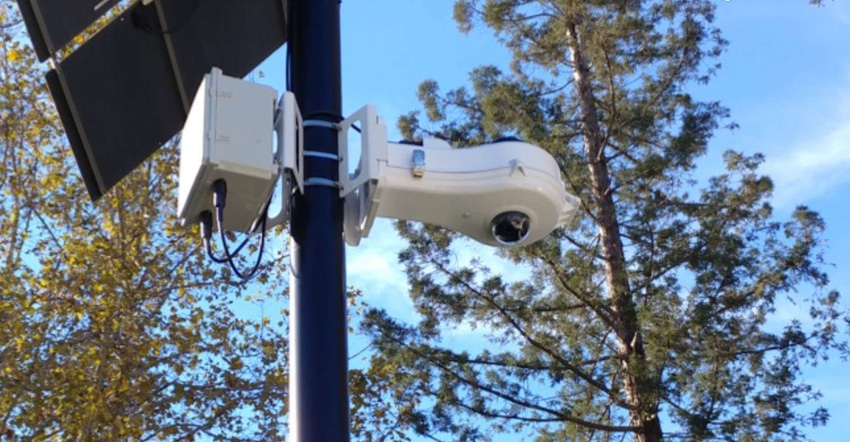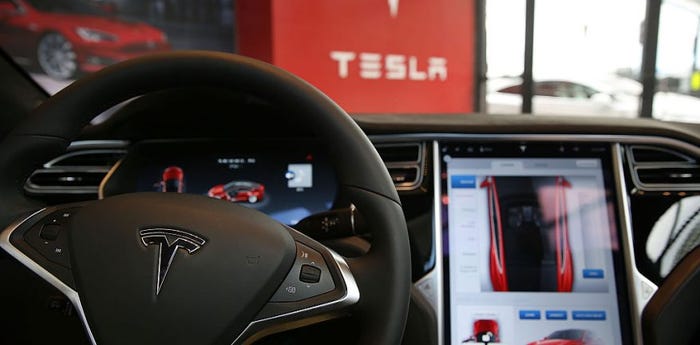The Las Vegas shooting and the future of physical security systems
In an interview, a senior engineer at IIoT security company V5 Systems provides practical information on the future of physical security technology.
October 11, 2017

Discussing how to prevent mass shootings can be a sensitive subject, especially in the aftermath of a tragic episode that occurred in Las Vegas on October 1, which was the deadliest mass shooting in U.S. history. Such events, however, also trigger the field of security to evolve and consider which techniques and technologies can avert similar attacks in the future. The recent Las Vegas shooting was also crucial in that it changed it followed a different template than many other past shootings, forcing hotel owners, casinos and event planners to rethink physical security.
To learn how technology can help mitigate similar attacks in the future, we reached out to Will Hedgecock, director of engineering at V5 Systems, which specializes in portable outdoor IIoT security technology, including IP cameras and gunshot detection. In this interview, Hedgecock discussed the limits of conventional technology but also explains how gunshot detection systems can be best integrated with video surveillance to combat future shootings. The interview has been edited and condensed.
There was little that could have been done to stop Stephen Paddock, the Las Vegas shooter, from smuggling weapons into the hotel. Conventional video cameras were ill-suited to spot the weapons as they were hidden in luggage, correct?
Hedgecock: Absolutely correct. With the exception of X-ray imaging every person’s luggage as they check into a hotel, it is unlikely that any form of passive surveillance would be able to detect weapons being smuggled in via luggage.
A unique aspect of this recent shooting as the fact that the shots were fired from the 32nd level of a hotel. Is it possible to use gunshot detection technology to help identify how high a shooter is, if we see similar urban sniper attacks in the future?
Hedgecock: Our gunshot location technology is 3D-based, so the short answer is yes, it is possible for this sort of tech to narrow down the elevation of a shooter more quickly than a human can. The caveat is that if you assume that all of our sensors are located in one plane at approximately street level, then the accuracy of the vertical component/elevation of the shooter will be less than that of its 2-D location. However, the accuracy would still be high enough to give you an idea of whether to look at the first few floors of a building versus the tenth, twentieth, or thirtieth floor and as such, would have great utility in helping police to identify the source of gunfire quickly.
One of the challenges of the Las Vegas event seemed to be the fact that the target was a concert audience. In addition, Las Vegas often has loud explosions in the form of fireworks, etc. Do noisy environments make it difficult to isolate the sound waves associated with gunfire?
Hedgecock: This is a great question, and you’re 100% right. Most gunshot detection technology at the moment including ours uses the impulsiveness, or the sudden change in loudness and intensity, of a sound to help classify it as a gunshot. In the presence of a loud concert on the Strip, it would be much more difficult for any technology to differentiate the sounds of a gunshot from that of fireworks, clapping, music, or any other highly impulsive acoustic occurrence. This is for the same reason that the people at the concert themselves weren’t even aware that they were being shot at until it was much too late.
What is your perspective on the limitations of gunshot detection systems?
Hedgecock: The primary limitations on all gunshot detection systems is directly related to the physics of sound propagation and how it is affected by the presence of other noises, obstructions, the environment and even the temperature. This fact can make it less suitable for some types of situations and use cases than others. That said, the use cases in which the technology is the least effective (such as on the Vegas strip or during a large concert or gathering) are also the same use-cases in which a police presence is already elevated and the utility of the technology is much lower. Let’s assume that the primary benefit of gunshot location technology is to increase awareness of gun violence in real time as it is occurring and to decrease the response time of emergency responders. If that is true, then the environments in which this technology are the most useful are those in which the police aren’t already at the scene of the crime or aware that there is the potential for violence during a specific time or place. This can include areas such as public parks, corporate campuses, universities, parking lots, housing developments, suburban blocks, etc., and in each of these types of environments, [gunshot location] technology excels.
How can AI play a role in gunshot detection?
Gunshots sound very different across different environments, making the rate of false positives very high in most cases. Using artificial intelligence that can learn the ambient sounds of an environment over time can directly address that problem, dramatically decreasing false positives.
[IoT Security Summit, co-located with Blockchain360 and Cloud Security Summit, explores how industry-wide security, privacy and trust can be established to unlock the full potential of IoT. Get your ticket now.]
How might gunshot detection systems and video camera surveillance be optimally integrated?
Hedgecock: Ideally, a fully integrated gunshot location and video solution would be one that provides complete situational awareness in real-time with minimal user intervention. This could include such features as activating cameras once a gunshot has been identified, turning cameras in the area to face the source of the shot, and recording HD video for forensic evidence after the fact. While our technology has not yet reached this fully integrated stage, all of the pieces of the puzzle are there. These pieces include precisely self-determining the time and location of each and every GSL unit and camera, determining the orientation of the unit and the direction of the source of the shot, and even utilization of pan-tilt-zoom cameras with the ability to self-actuate. It’s just a matter of time before we can integrate all of these pieces of the puzzle into one unified system.
Finally, where do you see this problem headed in the future? There seems to be an unfortunate pattern of mass shootings in the US and elsewhere that follow similar narratives. How might we use technology to break the pattern?
Hedgecock: Technology will never eliminate mass shootings. Technology can only help first responders reach a critical event quicker, in turn saving lives.
About the Author(s)
You May Also Like

.png?width=700&auto=webp&quality=80&disable=upscale)
.png?width=700&auto=webp&quality=80&disable=upscale)
.png?width=300&auto=webp&quality=80&disable=upscale)
.png?width=300&auto=webp&quality=80&disable=upscale)
.png?width=300&auto=webp&quality=80&disable=upscale)
